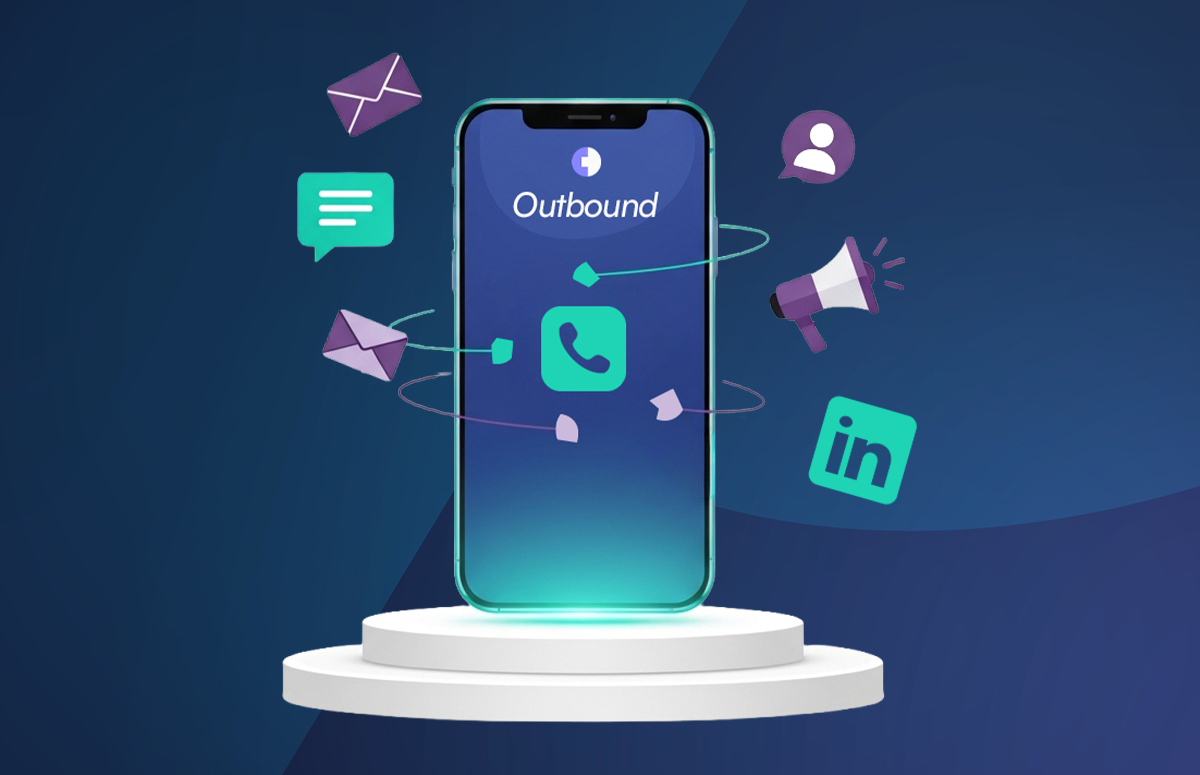What is Predictable Revenue? Guide for Sales Managers
Imagine if you could tell, with absolute certainty, what your company’s revenue is going to be each month for the next financial year.
Think about the freedom and confidence that would give you for strategic planning, reinvestment, and resourcing.
Sounds impossible and altogether unrealistic, right?
And it is, but here’s the thing:
What if you could get halfway there? What if you could be 20, 50, or even 80% better than you are right now at forecasting future revenue?
That’s the idea behind predictable revenue: a systematic approach for generating consistent sales growth.
In this guide, we’ll answer:
- What is predictable revenue?
- What are its benefits?
- What are the different predictable revenue models?
- What are the best strategies for making your revenue predictable?
Let’s go! 👇
What is predictable revenue?
Predictable revenue is a tricky term, as it refers to several things at once, though they’re all deeply connected:
- Predictable revenue is a goal for businesses that want to consistently generate a reliable income stream over time, with a high degree of forecastability and repeatability.
- Predictable Revenue is a book by Aaron Ross, in which he introduces the idea of predictable revenue and an outbound sales system he developed at Salesforce.
- Predictable revenue is the system sales teams employ to create repeatable and measurable success.
In most cases, when sales teams refer to the idea of predictable revenue, they’re wrapping all three explanations into one.
It’s the system, introduced in Ross’s book, that helps them reach the goal of consistent and predictable revenue generation.
That system has four key facets.
1. Specialised sales roles
In the predictable revenue system, there is no “salesperson.” The sales team is made up of people in four distinct roles:
- Inbound Lead Responders (often called Sales Development Representatives or SDRs) who qualify inbound leads from marketing.
- Outbound SDRs who prospect and set meetings for Account Executives (AEs).
- Account Executives who take meetings, run demos, and close deals.
- Customer Success Managers/Account Managers (CSMs/AMs) who own the account post-sale and contribute to retention and upsell/cross-sell opportunities.
Side note:
Some companies call their outbound reps BDRs (Business Development Reps) and use SDR to refer to those responsible for inbound.
The idea behind the specialisation is improved efficiency and scalability.
Closers hate spending time prospecting, and if they’re responsible for both, they’ll prioritise active deals and neglect to build pipeline. Having specialised roles for lead development and prospecting resolves this.
2. Outbound sales development
The predictable revenue model doesn’t throw inbound in the rubbish, but it does strongly emphasise that a proactive outreach model is critical for generating a sales pipeline.
Outbound SDRs use cold email, LinkedIn, and cold calls to book meetings with ideal-fit prospects.
These actions are predictable (they have to hit activity targets), and when combined with conversion rate metrics, it means that their ability to generate meetings is predictable as well (to an extent).
3. Consistent metrics and targets
To make revenue predictable, teams track:
- Number of leads/prospects contacted.
- Number of meetings booked.
- Conversion rates at each stage.
- Sales cycle length.
- Average deal size.
This enables forecasting and performance tuning. It also allows teams to measure the impact of their sales strategies.
4. Repeatable processes
Sales managers work with their SDRs and AEs to produce systems that every person follows, every single time.
It’s like a sales assembly line. These processes include cold calling scripts, workflows, cadences, and qualification criteria.
What are the benefits of revenue predictability?
Being able to predict future revenue with a high degree of certainty helps brands with:
Better strategic planning
It enables leadership to make confident choices about international expansion, investments, and hiring.
This allows you to scale operations systematically without overextending.
Improve financial management
Accurately modelling inflows and outflows makes it easier to manage runway and capital allocation.
This has the flow-on effect of making your business more attractive to investors and lenders.
Growth efficiency
You can double down on high-performing channels with predictable outcomes.
You can also improve your ability to effectively align headcount and inventory with expected demand.
Team accountability and focus
Sales, marketing, and CS teams operate with defined KPIs tied to pipeline and revenue forecasts.
They then spend less time reacting to surprises and more time executing the proven buying process.
Recurring improvements
Predictable models generate reliable performance data.
This makes it easier to experiment with a new approach to sales, refining tactics and processes as you go.
Risk mitigation
A consistent approach to revenue generation is a good buffer against downturns.
It creates stability across hiring, budgeting, and vendor commitments.
What are the different predictable revenue models?
There are a few different ways to make predictable revenue work.
While Aaron Ross’s book advocates an outbound-first model, most teams use a combination of outbound and another strategy.
These are the four main models.
1. Outbound sales model
This is the classic predictable revenue model.
Dedicated SDRs proactively prospect and reach out to potential customers through cold calling, cold email, and LinkedIn touchpoints.
Their aim is to book a meeting for the AE, who will give a sales demo, close the deal, and hand the account off to the CSM for long-term nurturing and expansion opportunities.
This model is widely used in B2B SaaS and is a great fit for enterprise sales and high-ACV products.
2. Inbound/content marketing model
In this model, marketing generates leads through content, SEO, webinars, paid ads, and social media.
Sales teams (Inbound SDRs) qualify and convert these leads to a meeting with an AE. From there, the process is very similar to the outbound model.
It works well for SaaS, ecommerce, and services businesses that have a strong brand and organic reach.
In practice, few brands rely solely on outbound, and almost always have some kind of inbound engine going. It’s a rare company, especially in the software world, that doesn’t produce some kind of content or have its founder active on LinkedIn.
So while they might not have dedicated SDRs for inbound leads, because the volume is low, they’re still bringing in something from inbound.
3. Product-led growth (PLG) model
This model is actually a sales rep-free model, so not something that would fit traditionally under the banner of predictable revenue as described in the original book.
But with strong inbound marketing and robust activation and retention metrics, it can still be a viable and predictable model.
The idea here is that the company attracts users to the product with a free trial or freemium tier, usually through content marketing, advertising, or user-generated content (UGC) campaigns.
Users try the product, experience value, and convert themselves, usually with the help of some psychological marketing and nudges built into the app experience.
The PLG model is a good fit for self-serve SaaS tools with strong UX and low CAC, both in the B2B and B2C spaces (though it’s more often found in B2B products).
4. Account-based sales (ABS) / Account-based marketing (ABM) model
This model is a specialised version of the outbound model, but with much more marketing involvement and a much more targeted list of ideal accounts.
In ABS/ABM, sales and marketing work together to identify and target high-value accounts with highly personalised campaigns and outreach.
It’s typically associated with long sales cycles, high forecastability, and a low lead volume, offset by the higher deal size associated with the high-value enterprise accounts being targeted.
Due to its low-volume nature, it’s harder to get ABM to a super-predictable point.
This model is generally best for B2B companies selling to enterprise organisations with large buying committees and six-figure-plus contracts on the line.
What are the best strategies for making revenue predictable?
Aside from adopting Aaron Ross’s model, what other strategies can GTM teams implement to make revenue more predictable?
Here are four.
1. Leverage modern sales tech
Sales tech is at the centre of a good predictable revenue model.
Aside from the trusty CRM, you’re going to need a few basics:
- A sales outreach and engagement solution.
- Scheduled company and contact data enrichment.
- A solid VoIP platform for outbound calls.
- Sales enablement content and a platform for managing it (for AEs).
- A reliable videoconferencing solution built for sales demos.
- Intent data that tells you which accounts are hot and what deals to prioritise.
Cognism can help with a lot of that! It’s a powerful tool for making revenue predictable because it delivers accurate, compliant B2B contact and intent data that fuels consistent pipeline creation.
By arming sales teams with real-time verified contact details and insights into buying intent, Cognism reduces guesswork, shortens sales cycles, and ensures reps focus only on high-converting accounts.
See what Alexander Porter, sales leader at SingleStore, had to say about using Cognism 👇
And here are the results Cognism produced for SingleStore:
- 300% more SDR dials with Cognism’s data.
- Increased conversations with ideal customers.
- 100s of hours saved per week.
2. Take another look at your ICP
If you’re not going after the best customers for your product or service, your ability to make accurate revenue projections is limited.
That’s why refining your ideal customer profile (ICP) is crucial for building a predictable revenue engine.
The best move here?
Examine your historical data. Rather than creating an imaginary picture of what a great customer looks like to you, look at your actual customers.
Here are some useful questions to answer:
- Which customers are using your product the most?
- Which industries stay the longest?
- What are your win rates across different verticals or use cases?
Then, define your ICP based on the type of company that delivers the greatest customer lifetime value (LTV).
3. Build reliable lead-gen engines
Outbound is an important part of predictable revenue, but it doesn’t mean you should ignore inbound lead generation altogether.
The big win that inbound offers is its long-term scalability.
Where outbound typically has a one-to-one connection between input and output, content marketing tends to compound over time: the resources you invest now pay off in the future, and continue to grow as you progress.
Which makes it a smart way to increase revenue without adding a ton of prospecting headcount.
Classic channels and techniques to experiment with here include:
- Improving your site SEO (search engine optimisation) to drive more traffic.
- Building a brand presence on social media.
- Hosting online events (like webinars).
- Attending trade shows and in-person industry events.
4. Don’t forget about retention
When looking to generate revenue predictably, there’s one thing that many brands leave out of the picture:
Customer churn.
If your existing customers are leaving you, you’re losing revenue, which means that anything you’re doing to bring in new revenue is (at least in part) filling up a leaky bucket.
Some strategies you can employ to prevent churn, and even drive some expansion revenue, include:
- Tracking customer health scores and setting up automated alerts for CSMs to jump in when customers slip into the amber (before they turn red and churn).
- Keeping the AE involved throughout the customer lifecycle, so they can support with up-sell and cross-sell opportunities when they arise (e.g., if a new use case appears or you release a new product).
- Monitoring product usage, using tools like Pendo to prompt users to adopt features they’re not using (the more they use the product, the less likely they are to churn).
Make revenue predictable with Cognism
So there you have it - the complete guide to making accurate revenue predictions at your company!
And if you’re looking for a tool to improve your sales efforts and boost business growth, then look no further!
Cognism provides best-in-class company and contact data, advanced buying signals, and personalised recommendations - all designed to make prospecting smarter and faster.
Click 👇 to find out more.


